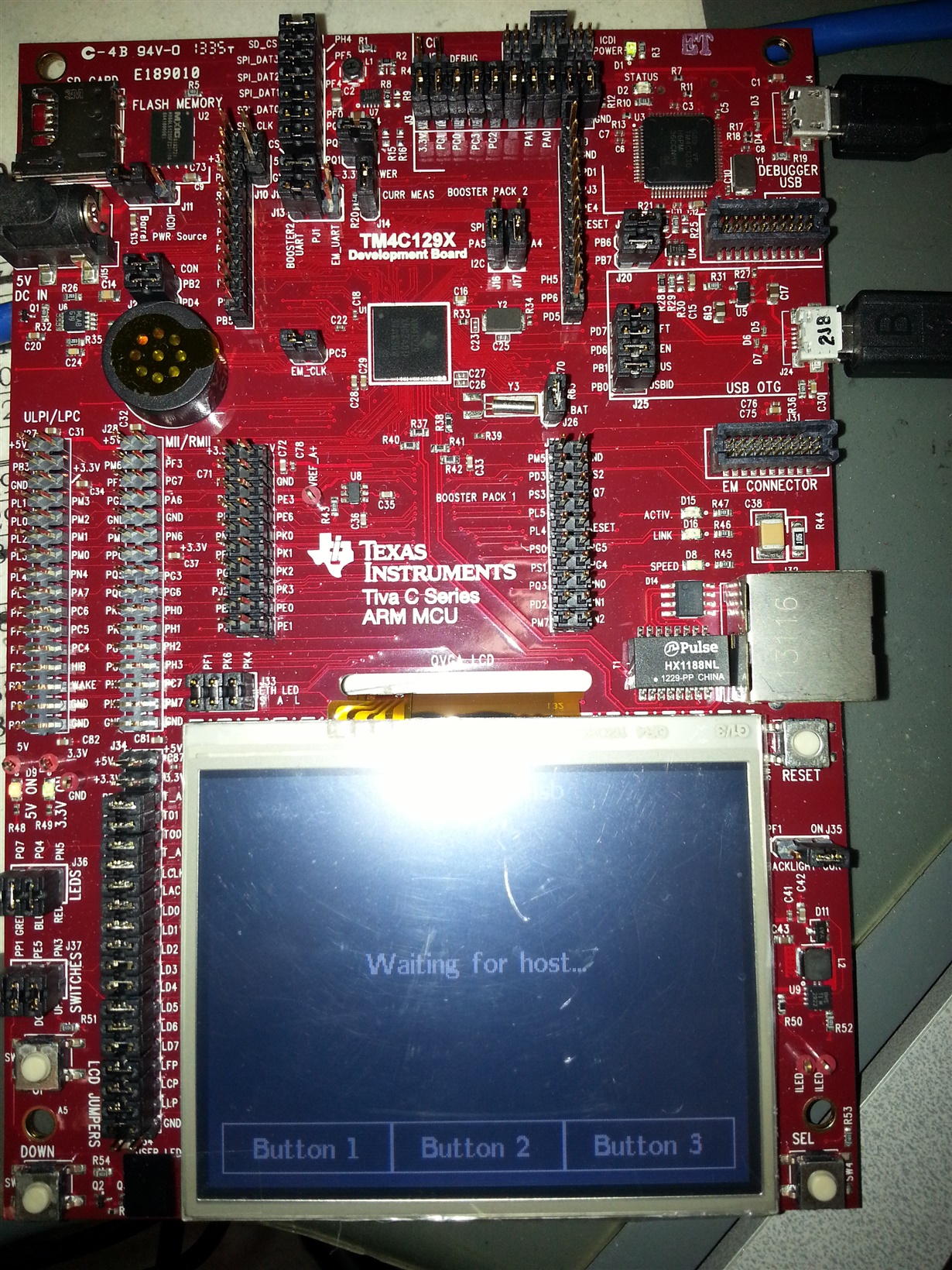Hi,
I'm porting my LM3S9B96 application with its bootloader to my new TM4C1294KCPDT. Everything now seems to work (thanks to Amit Ashara suggestions) except USB in bootloader. So to check if this is a software rather than an hardware problem, I tried to load a Tivaware demo, and it also failed. Not sure about the demo was working, I tested it on the evaluation board and... surprise! It's not working also on that board. So? What to do now?
Let's start from the beginning: the demo I'm trying is boot-demo-usb located in "SW-TM4C-2.1.1.71\examples\boards\dk-tm4c129x\boot_demo_usb". The demo should show up a composite device with a simulated mouse and a DFU interface (ok, perhaps I should have chosen a simpler demo, shouldn't I?).
Loading firmware with ICDI and starting application shows the "Waiting for host..." message on screen. Connecting the USB cable in the USB ON THE GO connector does not change anything. Device does not show up in Window's Device Manager.
After further investigation I found that no USB interrupt is fired from the USB peripheral. To do so I simply wrote down this interrupt routine:
void myUSB0DeviceIntHandler(void)
{
// call real interrupt handler
USB0DeviceIntHandler();
}
Then I imported myUSB0DeviceIntHandler in my startup file instead of the original interrupt handler, placed a breakpoint in myUSB0DeviceIntHandler and waited... But no interrupt came up when connecting or disconnecting wire or trying to enumerate devices.
My final goal is to verify if it is possible to make USB0 to work with only DP/DM wire couple, without VBUS, ID, ... and so on, as the final design only involves the two data lines.


